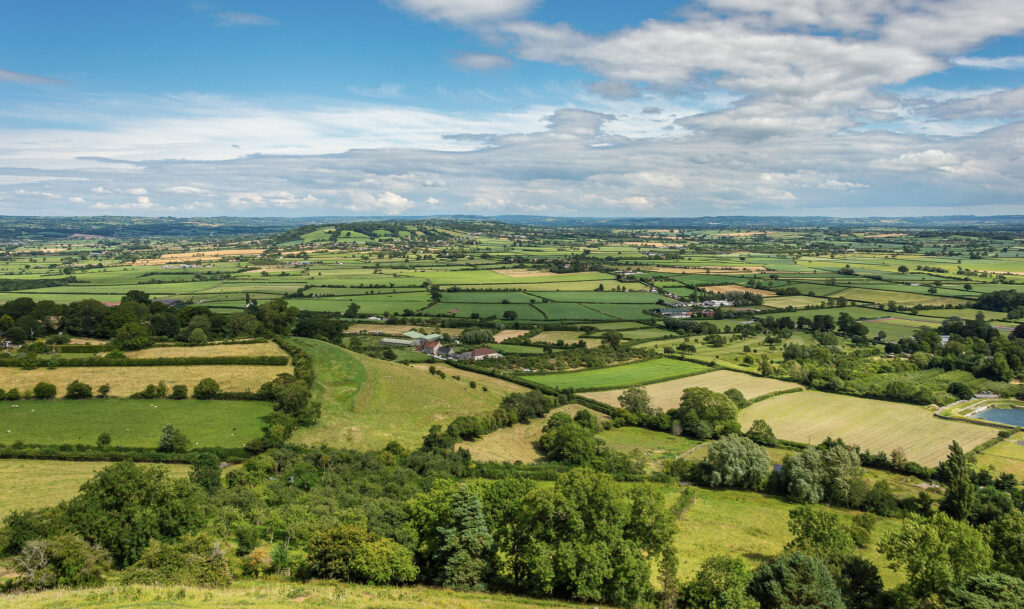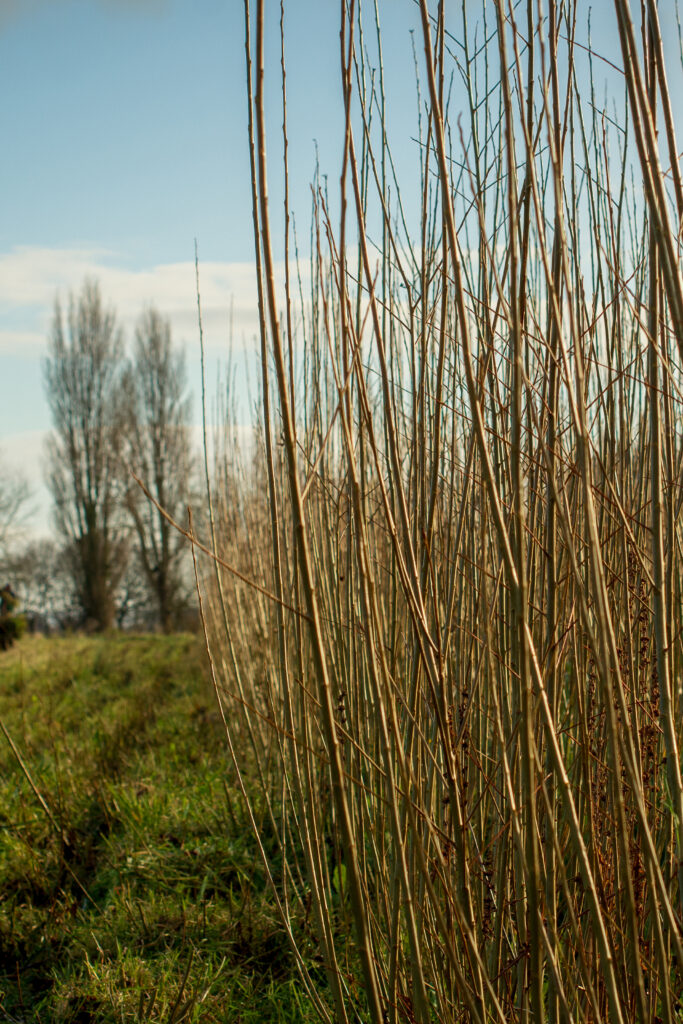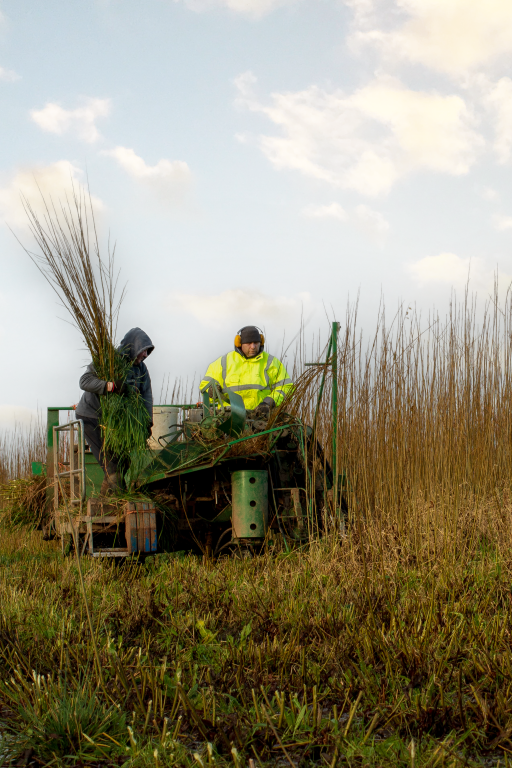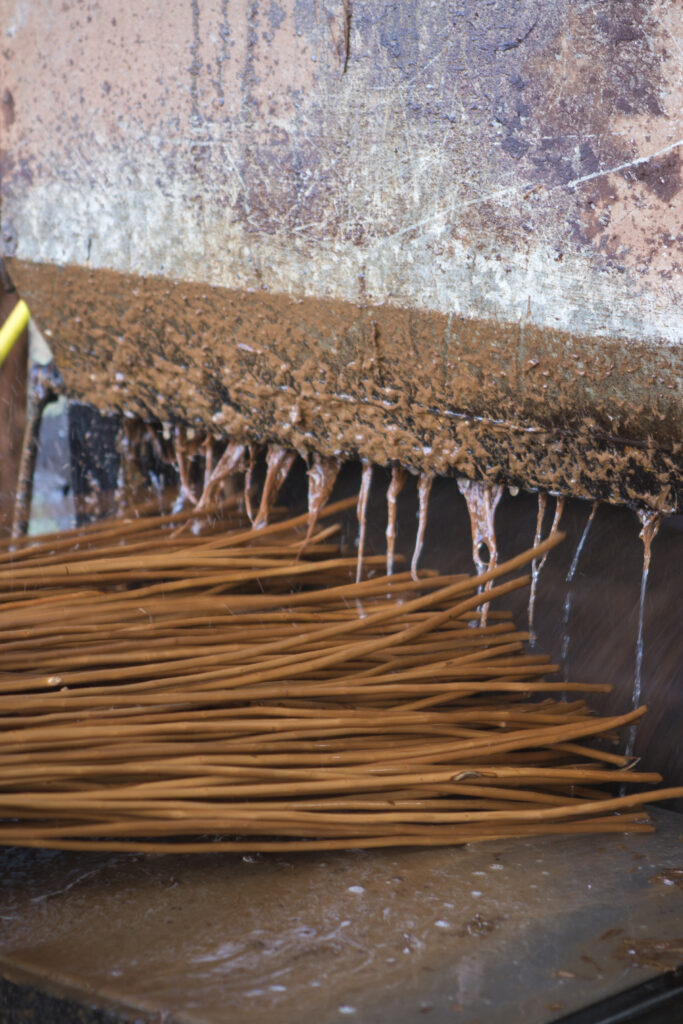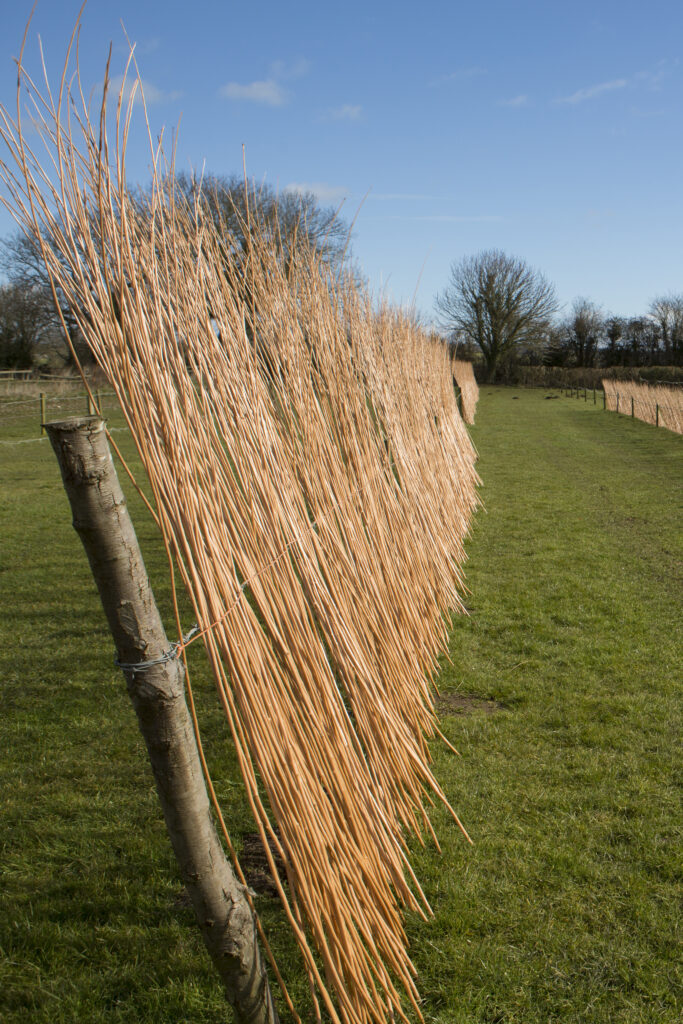Woven Into Our Journey
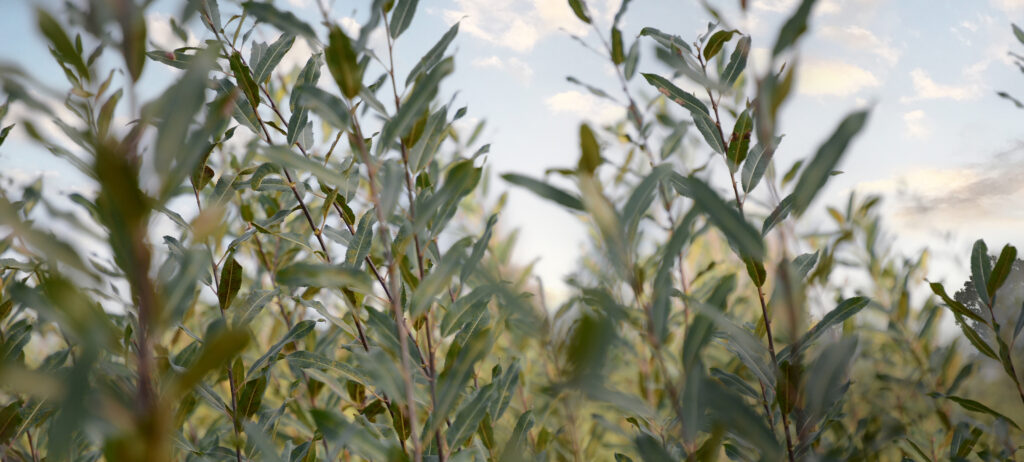
As basketmakers, we have a deep respect for willow, the plant that has been central to our craft for over 65 years. Willow is also a large part of Somerset’s heritage, with the Somerset Levels at the heart of the UK’s willow industry. Willow has been cultivated here since the early 19th century and remains an integral part of the landscape to this day.
From age 11, Darrell, 3rd generation of the company, would help his father collect willow from eight different growers across the Somerset Levels. As demand for willow products declined with the rise of plastic use, the number of growers dwindled. In 2007, Darrell partnered with friend and farmer Richard to establish their own willow-growing business, Somerset Willow Growers, our sister company. Somerset Willow Growers now supplies the majority of the willow we use in our baskets, as well as schools, hobbyists, basketmakers, local councils and artists.
How willow is grown
Somerset Willow Growers now cultivates and maintains over 50 acres of willow beds across the Somerset Levels. As an annual crop, willow regenerates to its full height within a year of harvesting and only needs replanting every 40-50 years. To establish a new willow bed, short pieces of green willow, known as ‘sets’, are hand-planted into freshly cultivated soil in spring. Up to 17,000 sets are planted per acre in neat rows, then weeded and carefully tended to throughout the year. The first harvest takes place at the end of the first year, but it takes three years of annual cutting before the willow is ready for commercial basketweaving.
Harvesting begins after the leaves have fallen, typically in late November following the first frosts, and continues through to March. Nowadays, withies are cut using a specialised harvesting machine – a tracked vehicle designed to navigate the boggy ground of the Somerset Levels. Despite this mechanisation, the process remains very labour-intensive, as bundles must still be hand-gathered and loaded onto trailers before being transported back to the farm.
Once back at the farm, withies are hand-sorted by length and checked for quality. They are placed in a sunken metal drum, where specific heights are pulled out using a yardstick for measurement. The length of the willow determines its use, with longer withies typically being thicker and shorter withies being finer. Withies measuring 3-5 feet are ideal for smaller baskets, such as picnic hampers and wine carriers, while 6-8 foot withies are used for our Somerset Willow Coffins, log baskets and furniture. Once sorted, the withies are bundled into ‘wads’, ready for the processing stage.
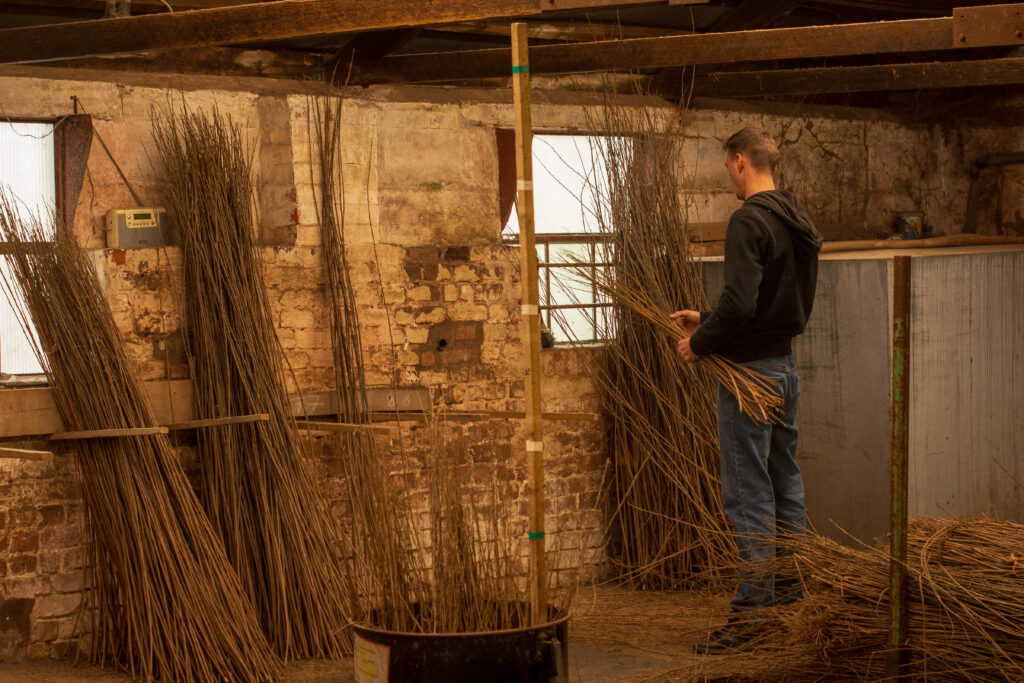
Willow has a variety of different finishes depending on how it is processed. A traditional buff finish is achieved by simmering the withies in boiling water for eight hours to release natural tannins from the outer bark. This process gives the willow a rich red-brown colour while also softening the bark, making it easier to strip. White willow requires willow to stand in water-filled pits until April, keeping them alive until the sap rises and new leaves begin to sprout. At this stage, the bark is peeled away to reveal the white inner wood.
To strip the withies, they are fed through rapidly revolving brakes that catch and strip away the bark. Water is pumped into the stripping machine to aid the process. Once stripped, the willow has a beautifully smooth finish. The withies are then spread along fences in the fields to dry naturally in the sun. Thorough drying is essential to prevent mould before the willow is bundled and ready for weaving.
About the plant
With over 400 varieties of willow, we use two in our basketweaving: Black Maul and Whissender (both Salix triandra), prized for their flexibility and ease of use in weaving. Most willow varieties thrive in moist soil and require more water than most conventional crops, making low-lying areas in the UK ideal for cultivation.
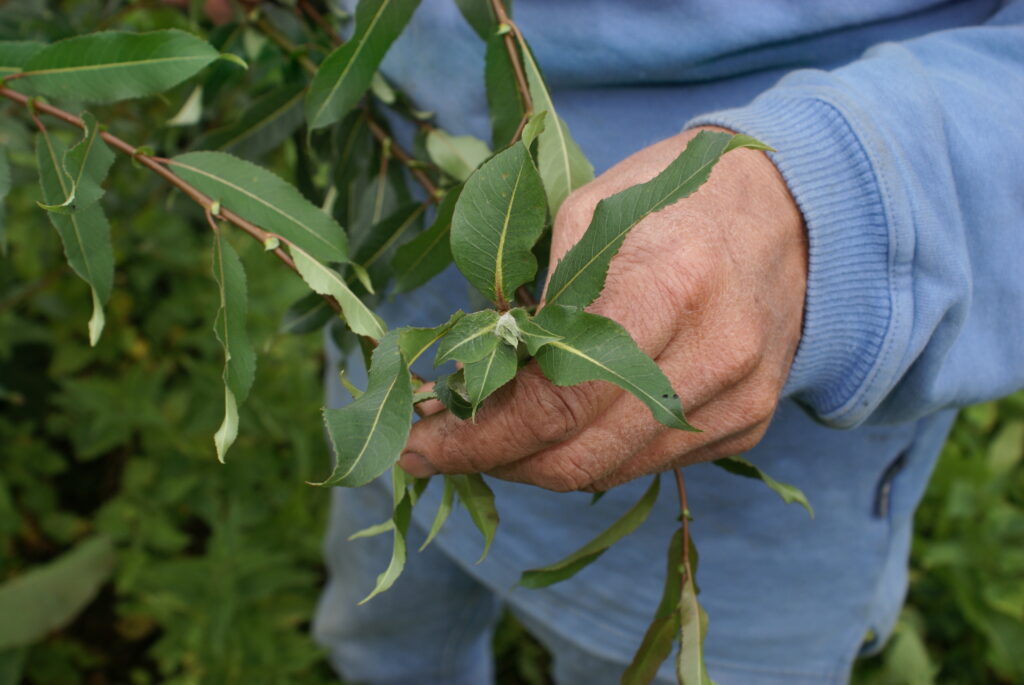
Willow has been valued for centuries, not only for its craftsmanship potential but also for its medicinal properties. Its bark contains salicin, a natural compound similar to aspirin, which has been used since ancient times to relieve pain. More recently, scientists have discovered a compound in certain willow varieties that can kill cancer cells, including those resistant to other treatments. Researchers from Rothamsted Research and the University of Kent are investigating its potential against neuroblastoma, a common and hard-to-treat childhood cancer with a survival rate below 50%.
Environmental benefits
As a short-rotation coppice, willow is a rapidly growing and highly renewable crop that regenerates quickly after harvesting, making it a popular choice for biomass energy. It is also a carbon-negative plant, absorbing more CO₂ than it releases, helping to sequester carbon by trapping it in the soil during its growth.
Beyond its sustainability, willow supports ecosystems by providing habitats for wetland birds and wildlife. Its high water consumption aids flood management by slowing runoff and easing pressure on rivers in flood-prone areas. Its extensive root system also plays a vital role in soil stabilisation, erosion and land restoration, making it a key tool in natural engineering solutions. With its unique environmental benefits, willow not only supports sustainable industries but also plays a crucial role in protecting and restoring natural landscapes.
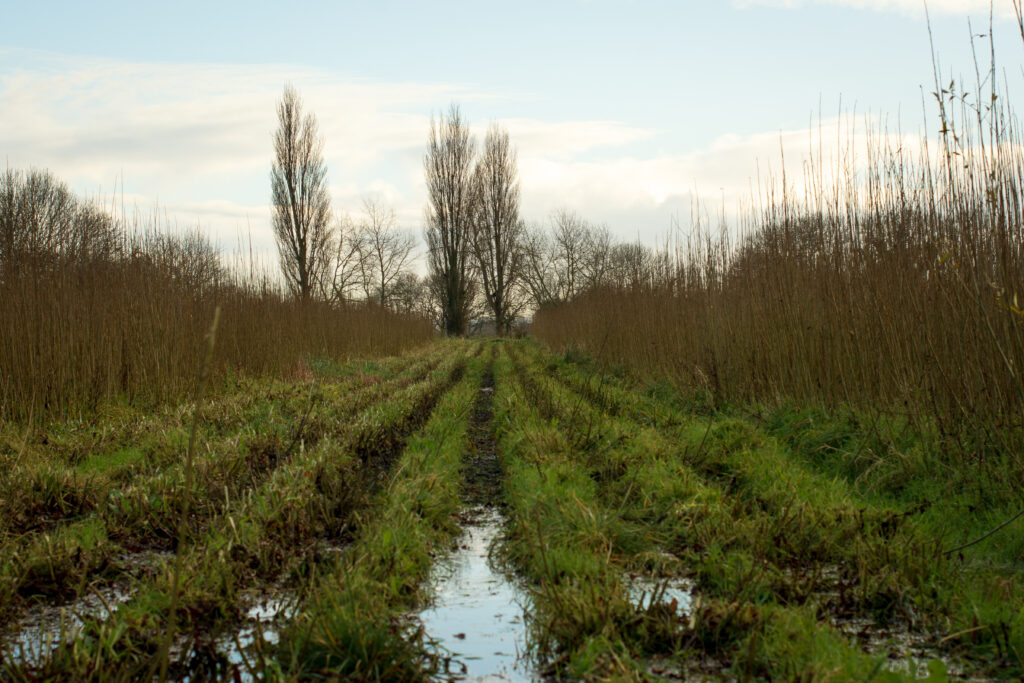
Willow has been integral to our craft for generations, deeply rooted in both our history and the landscape of the Somerset Levels. From its careful cultivation to the skilled hands that weave it into timeless baskets, this remarkable plant continues to shape what we do.
As both a sustainable resource and a symbol of tradition, willow remains as important today as ever. By growing, harvesting, and working with willow in harmony with nature, we not only preserve a centuries-old craft but also contribute to a more sustainable future. Woven into our journey, willow will continue to inspire and support our work for generations to come.
